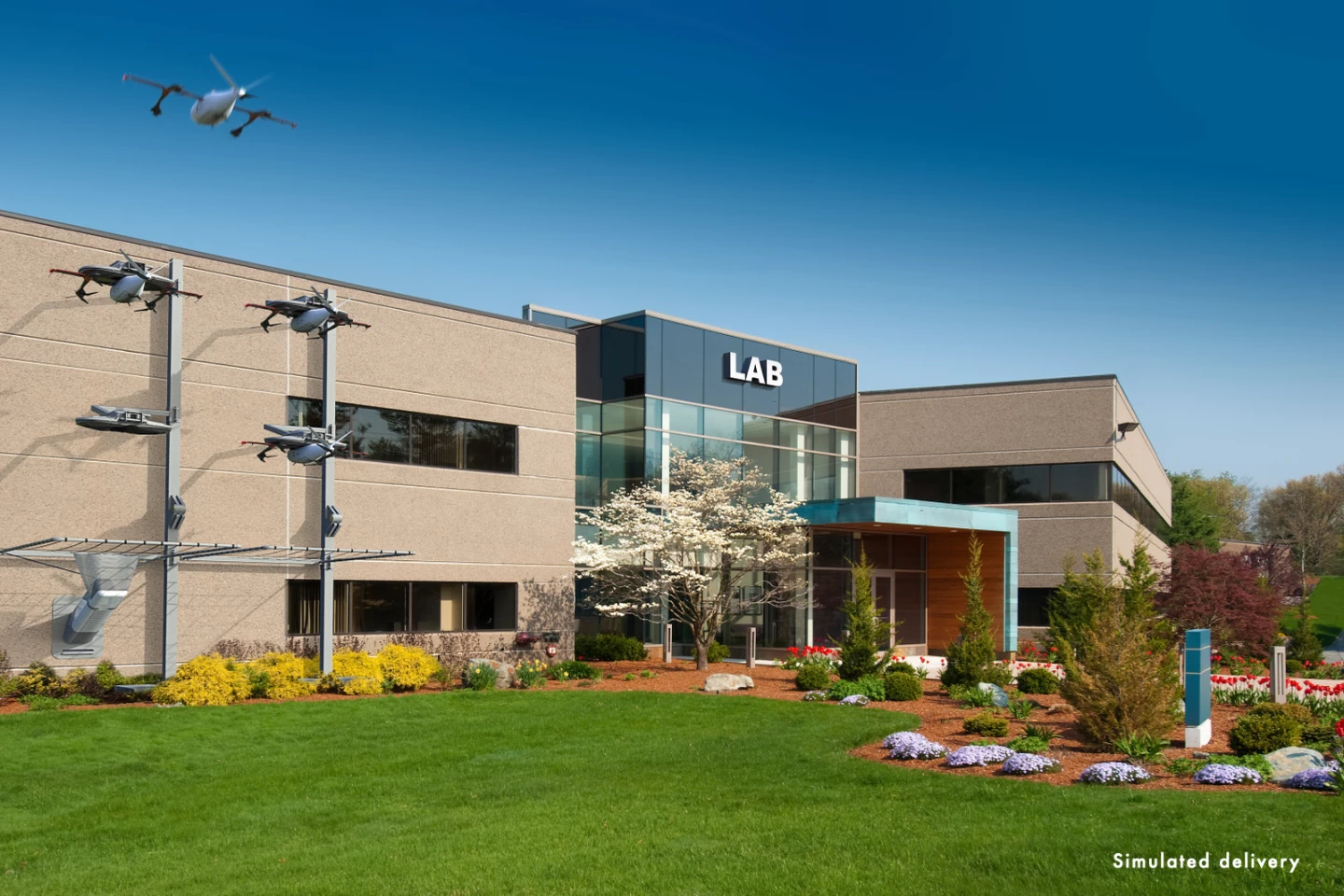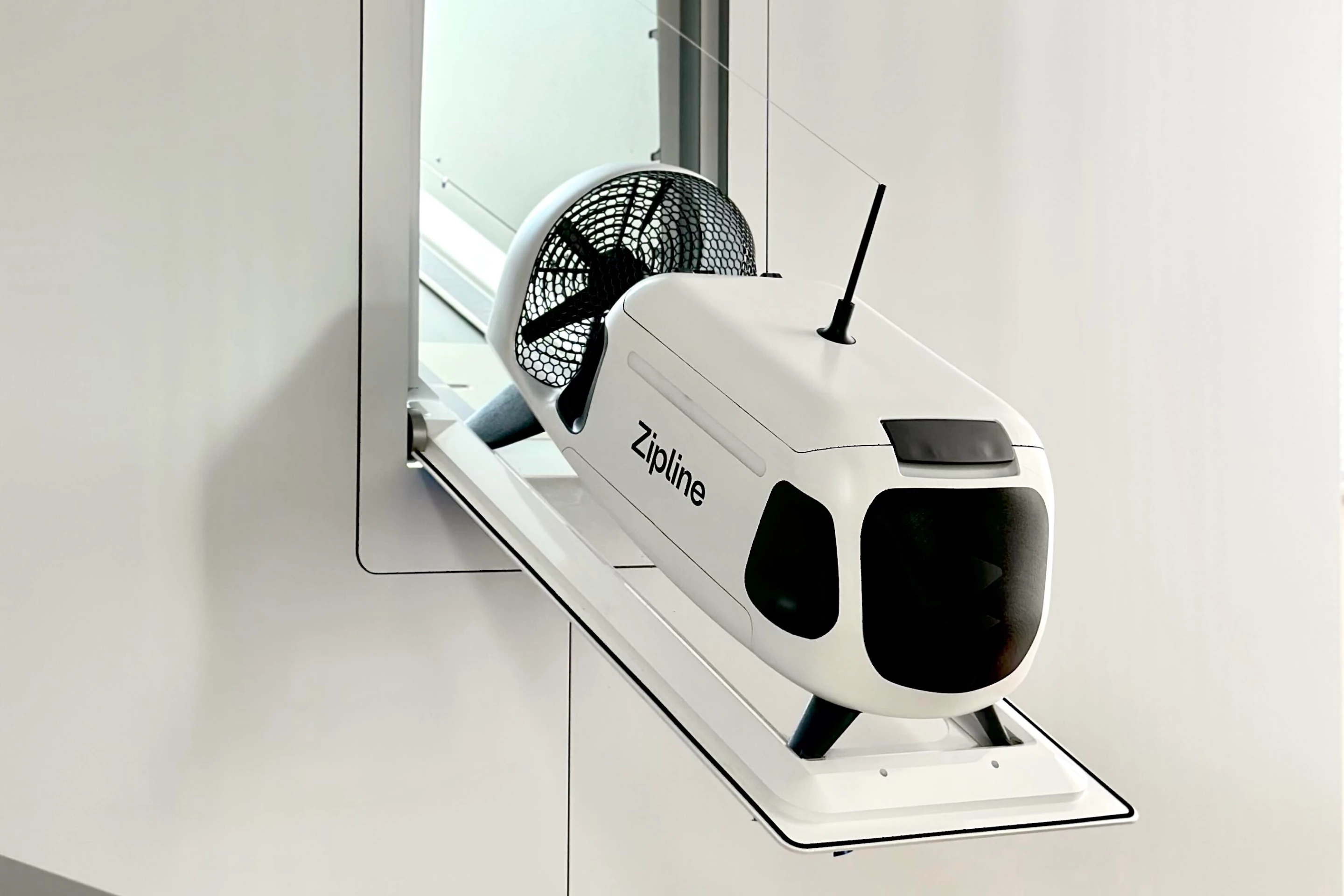When we last heard about Zipline, the California company was using parachutes to drop packages from its delivery drones to the ground. The firm's just-announced Platform 2 (P2) system, however, lowers loads inside of self-steering "droids."
Here's a quick overview of how P2 is intended to work …
A worker at one location starts by placing a cargo item inside a droid – this is basically a streamlined box with a shrouded propeller at the rear. In a docking station at that location, the droid is then loaded into the belly of one of Zipline's P2 Zip eVTOL (electric vertical take-off and landing) drones.
The P2 Zip proceeds to fly to the destination address, staying at an altitude of at least 300 ft (91 m) the whole time. Once it reaches that location, it hovers in place while lowering the droid down on a retractable tether.
Utilizing a downward-facing camera and other onboard sensors, the droid is able to see its target landing area, such as a home's front steps. It thus activates its propeller to ensure that it hits that mark, compensating for factors such as crosswinds. Once the droid lands, the recipient opens its hatch and retrieves their item. The droid is then winched back up to the drone, which in most scenarios flies back to its starting point.

It should be noted that the system is limited to loads weighing no more than 8 lb (3.6 kg), and the drones have an out-and-back service radius of 10 miles (16 km). That said, if they're flying straight from one loading station to another – where they can recharge their battery pack – their range sits at 24 miles (39 km).
A number of corporate clients have already signed up for the service.
Michigan Medicine, the MultiCare Health System and Salt Lake City's Intermountain Health all plan on using it to deliver prescriptions, while existing Zipline client the Government of Rwanda will use it for deliveries to homes, hotels and health care facilities. Grocery chain Sweetgreen is additionally planning on using the service to deliver groceries to customers' homes.
The Platform 2 system is demonstrated in the following video.
Source: Zipline





